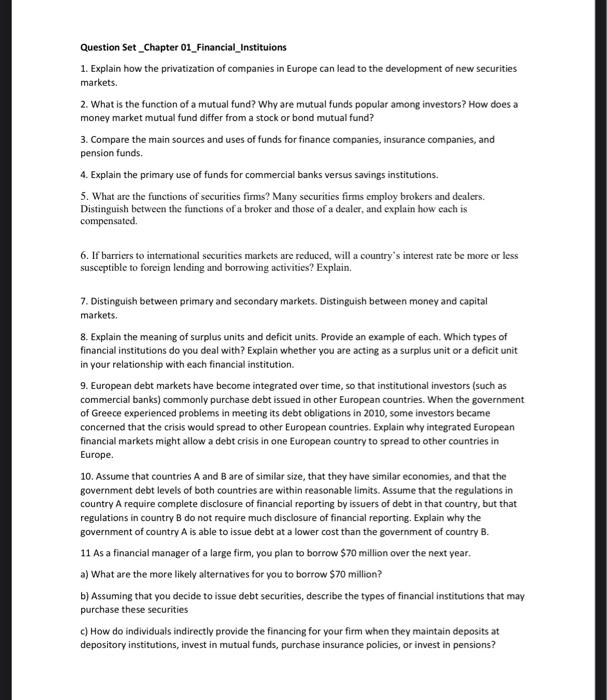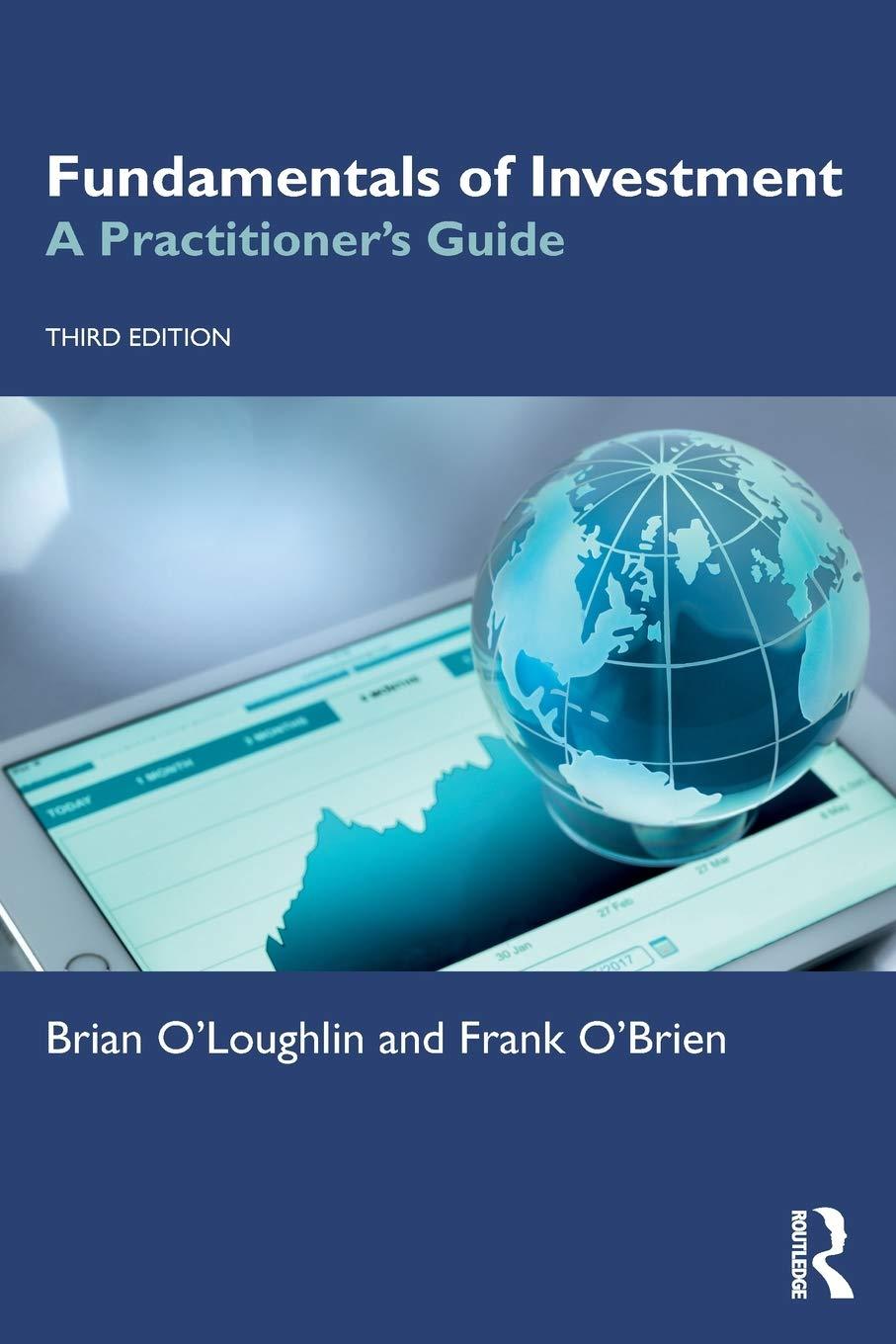Question Set_Chapter 01_Financial_Instituions 1. Explain how the privatization of companies in Europe can lead to the development of new securities markets. 2. What is the function of a mutual fund? Why are mutual funds popular among investors? How does a money market mutual fund differ from a stock or bond mutual fund? 3. Compare the main sources and uses of funds for finance companies, insurance companies, and pension funds. 4. Explain the primary use of funds for commercial banks versus savings institutions. 5. What are the functions of securities firms? Many securities firms employ brokers and dealers. Distinguish between the functions of a broker and those of a dealer, and explain how each is compensated. 6. If barriers to international securities markets are reduced, will a country's interest rate be more or less susceptible to foreign lending and borrowing activities? Explain. 7. Distinguish between primary and secondary markets. Distinguish between money and capital markets. 8. Explain the meaning of surplus units and deficit units. Provide an example of each. Which types of financial institutions do you deal with? Explain whether you are acting as a surplus unit or a deficit unit in your relationship with each financial institution. 9. European debt markets have become integrated over time, so that institutional investors (such as commercial banks) commonly purchase debt issued in other European countries. When the government of Greece experienced problems in meeting its debt obligations in 2010, some investors became concerned that the crisis would spread to other European countries. Explain why integrated European financial markets might allow a debt crisis in one European country to spread to other countries in Europe. 10. Assume that countries A and B are of similar size, that they have similar economies, and that the government debt levels of both countries are within reasonable limits. Assume that the regulations in country A require complete disclosure of financial reporting by issuers of debt in that country, but that regulations in country B do not require much disclosure of financial reporting. Explain why the government of country A is able to issue debt at a lower cost than the government of country B. 11As a financial manager of a large firm, you plan to borrow $70 million over the next year. a) What are the more likely alternatives for you to borrow $70 million? b) Assuming that you decide to issue debt securities, describe the types of financial institutions that may purchase these securities c) How do individuals indirectly provide the financing for your firm when they maintain deposits at depository institutions, invest in mutual funds, purchase insurance policies, or invest in pensions







